Halifax Area and the Civil War
Posted By Norman Gasbarro on March 6, 2011
The Halifax area of Dauphin County, Pennsylvania, consists of the area within the angle (“C’) of the triangular area of study for this Civil War Research Project (see portion of map below).
Essentially, everything south of Millersburg (upper left on the insert map) and Elizabethville (upper right on the insert map) could be considered part of the Halifax area. Halifax is a borough on the Susquehanna River, but it is also the name of a township. Around Halifax are Upper Paxton Township, founded in 1729); Halifax Township, founded in 1804; Jackson Township, founded in 1828; Reed Township, founded in 1849; Wayne Township, founded in 1878, essentially from Jefferson Township; and Jefferson Township, founded in 1842.
The mountain road over Peters Mountain, probably just a narrow dirt trail in Civil War days, was the land route that joined the upper part of Dauphin County with the lower part which included Harrisburg, the county seat and state capital. Early settlers used this trail to move over the mountain rather than going around it where they could encounter hostile Indians along the river. It was not until the 1920s that the dirt trail which was used by stage, horse and buggy and horseback riders, was replaced with macadam. Today, coming over the mountain on Peter’s Mountain Road (Route 225) is still an adventure with the hairpin turns, but the spectacular views are well worth the trip. It is still the preferred short-cut of locals, who would rather “make time” than wind around the road which follows the river (Route 147). In Halifax Borough, the two roads meet and then separate, Route 147 continuing up the river to Millersburg and beyond and Route 225 cutting across the valley to Elizabethville and beyond.
In a story on the Wiconisco Canal Company, which began by indicating that the Pennsylvania canal system began in 1827, it was noted Clarks Ferry was the southern terminus of a canal that ran across the river and northward. This branch was called the Susquehanna Division and because there were no railroads at the time, Halifax was an important community and stop along the water and stage routes. Following the discovery of coal and the development of the coal fields in the Lykens Valley around 1838, a new canal had to be built from Clarks Ferry to Millersburg, as the original one was not satisfactory. After political difficulties and much state expense, the new canal opened in 1848 with John Roakes as Superintendent. He remained for 15 years and was replaced during the Civil War by Francis Wenrich. The names of some of the boats and their captains from Halifax during the Civil War were: Daisy of Halifax and Charles and Jennie, Capt. G. W. Hochlander; The Columbus of Halifax, Capt. Daniel Loomis; Two Brothers of Halifax, Capt. Josiah Henninger; The G. W. Hochlander, Capt. William McClelland; Boat Judge Landis, Capt. Alexander Lingle; Boat Lydia Ann Lingle, Capt. Mahlon Griffin. With the development of the railroad from Sunbury to Harrisburg and thence to Baltimore, the canal became a losing proposition for investors and operators and had to be sold at sheriff’s sale; it was purchased by the Pennsylvania Railroad, but by 1889, it was impossible to navigate.
As previously mentioned, the Northern Central Railroad had completed its Susquehanna River line from Baltimore to Sunbury by 1858, running through Halifax, for a total distance of 138 miles. This became the primary troop transport route for Union Soldiers from central Pennsylvania who were heading to and from the northern Virginia front and points south during the Civil War.
The Northern Central Railroad chose a hotel at Front and Market Streets in Halifax as their station. At first, the hotel was known as Marshes Hotel after its owner William Marsh, but later became known as the American House during the time it was owned by William Kline. During the Civil War, William Marsh operated the Union Hotel. After the Civil War, when the Pennsylvania Railroad took over the line, a new station was built at the end of Armstrong Street opposite a canal lock.
William Kline was a retired sea captain and no doubt provided the guests at his hotel with many seafaring yarns as entertainment. During the Civil War, Union army officers set up a makeshift recruiting station under a large maple tree in front of his hotel, which was also the railroad station and ticket office. The recruits enrolled, boarded the train, and were carried away to Camp Curtin in Harrisburg to be mustered in for their military service.
An 1862 “Business Directory” of Halifax, reveals some of the same names that are found on the Civil War veteran list for that community: Physicians: H. O. Witman — W. W. Robins. Druggist: John Witman. Store Keepers: Samuel Landis — William Reed — James Ferguson — W. Waldron. Hotel Keepers: John Marsh, Union Hotel — William Kline, American Hotel. Foundry: A. S. Loomis. Lime Kilns: W. Lodge — J. Boyer and Brother. Canal Lock Tender: Joshua Ditty. Blacksmith: Christian Lyter. Justice of the Peace: C. Lyter. Saddler: Joseph Markley. Stone Mason: Adam Snyder. Cabinet Makers: Samuel Noblet — D. Brubaker. Chair Shop: H. Fleagler. Farmers: J. P. Leebrick — Joseph Brubaker. Postmaster: James Ferguson.
The oldest secret society in the Halifax area of Upper Dauphin County was the Masons, which was organized by 1808. By 1828, they had built their own hall and had over forty members, some coming from communities in the heart of the Lykens Valley to the north. Their influence began to wane and in 1832 they were attacked during one of their meetings by a mob of anti-masons. Under this pressure they gave up their order. About the same time, another fraternal organization began to form, the Odd Fellows, who took over the old Masonic Hall. In 1853, they built their own hall which was in use during the Civil War but after which was sold to the Halifax Bank. Some men who were members of the Masons during the latter part of their existence, or sons of Masons, can be found on the Civil War military rolls, but more men who were members of the Odd Fellows joined the Union army because they were part of the only fraternal organization in Halifax during the war period.
Prior the the Civil War a group was founded in 1845 called the “Sons of Temperance,” which existed only a short time until about 1850. They served the community more as a beneficial society than a fraternal order, but some of the former members of this group may have become Civil War soldiers. Women played a part in the organization of the successor to this organization, “Amity Lodge,” which was founded in 1865, and supported by Emma Carpenter, who served as financial secretary, H. K. Meyers, as secretary, and Annie Bottomstone, as treasurer.
Returning veterans from the Civil War would find no active fraternal organization to join except the Odd Fellows, but a branch of this group, known as the “Eureka Encampment No. 137” was chartered on 20 November 1865. Not much is known about this group – whether it was composed primarily of veterans, or whether anyone could join.
The final organization of importance to the Civil War was Grand Army of the Republic Post No. 523 (the G.A.R. of Halifax) which was organized 28 June 1886. It had no post name until the death of Gen. H. W. Slocum in 1894, when the members decided to bestow the honor upon him and they became known as General Slocum Post No. 523. It is unclear why Gen. Slocum was chosen for this honor, as the Wikipedia entry for him points out his actions at Gettysburg that could have cost the Union the victory. Perhaps, men who served under him felt differently about his legacy:
Henry Warner Slocum (September 24, 1827 – April 14, 1894), was a Union general during the American Civil War and later served in the United States House of Representatives from New York. During the war, he was one of the youngest major generals in the Army and fought numerous major battles in the Eastern Theater and in Georgia and the Carolinas. Controversy arose from his conduct at the Battle of Gettysburg, where he was accused of indecision and a dilatory advance to the battlefield, earning him the derogatory nickname “Slow Come”.
In an article in the Halifax Bicentennial Book on the activities of the Halifax “Old Town Band,” it was mentioned that in the years between 1900 and 1935, the band played at picnics, festivals and street parades:
Of the old citizens of town: who can forget the Memorial day parades when the Boys of Blue and of the G.A.R. followed the band down the old dusty road of Market Street with the trombones blasting out the strains of music to one of Sousa’s great marches or the rolling of the drums as they entered the cemetery to conduct the services of the day with the strewing of flowers over the graves of their fallen comrades and then the reading of Lincoln’s Gettysburg Address by one of the veterans and finally the sounding of taps. All this added to the festivities of the day.
For the 175th Anniversary of the Halifax area in 1969, a commemorative history, Indian Arrows to Atoms or the Story of Halifax and the Valleys, was published which included a photograph of the Gen. Slocum Post 523 members. The photo was reproduced for the 200th anniversary 25 years later, but appears to be copied from the printed edition of the 175th anniversary history. The original of the photograph has apparently been lost over time, so reliance on the first printed edition is required to determine who the G.A.R. members are in the photo and when the photo is taken, although scans of both version are reproduced below. If anyone knows more about the picture, contact would be greatly appreciated.
Records of all these organizations are hard to find. A search through newspaper archives of the area could help to re-create the histories that have been lost.
Information for this post was obtained from the two anniversary books, Indian Arrows to Atoms and the Halifax Bicentennial Book.
 ;
;
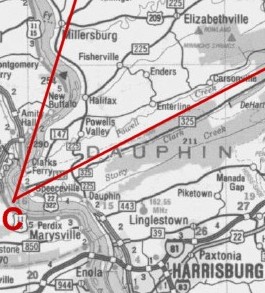

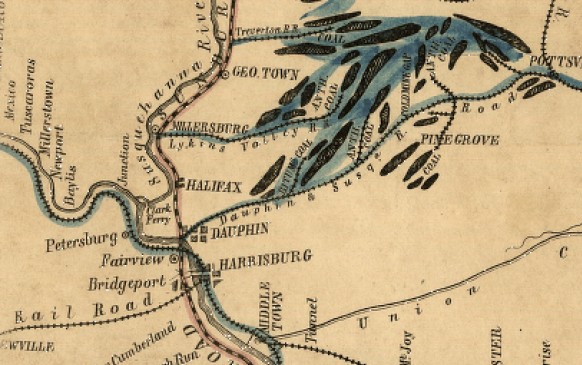
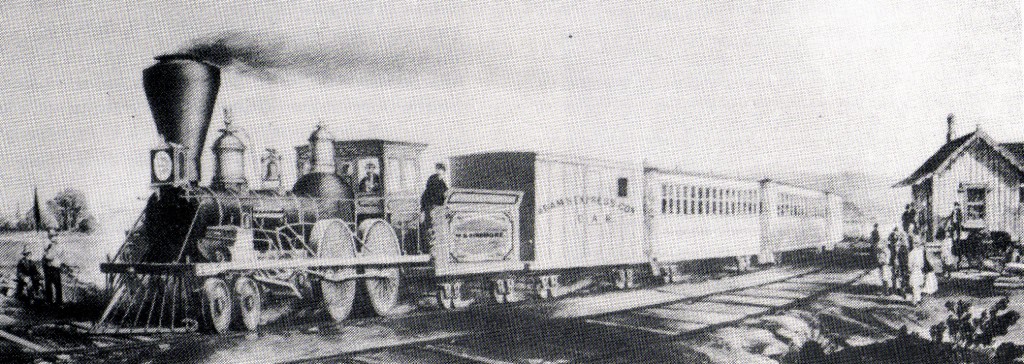
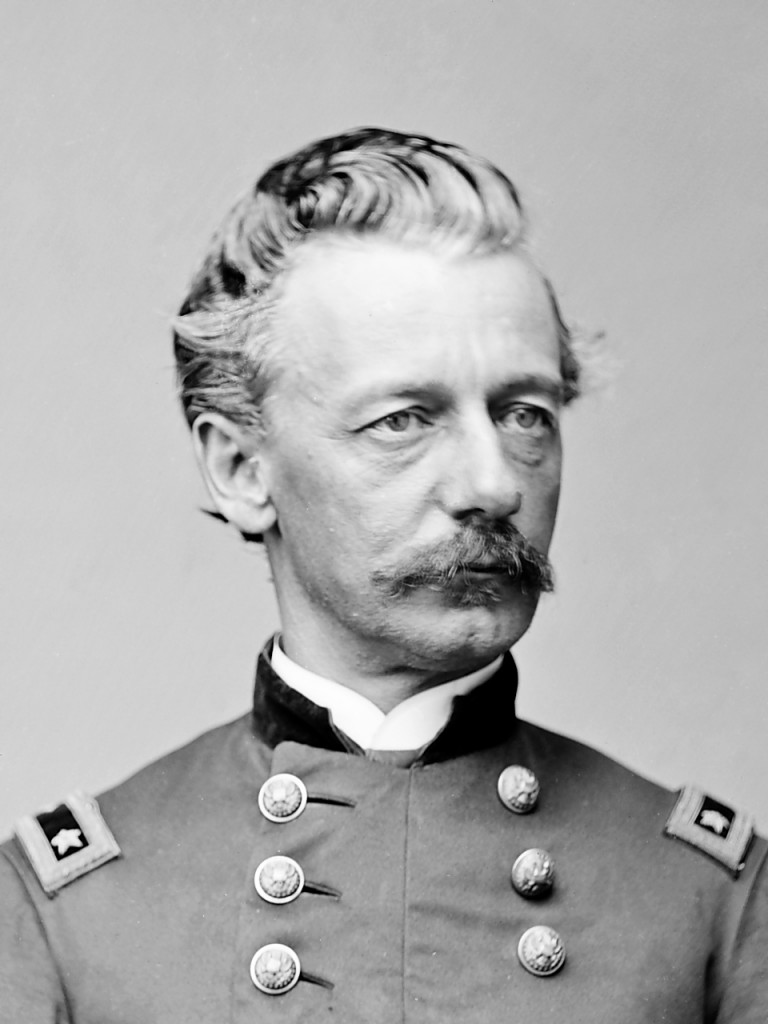

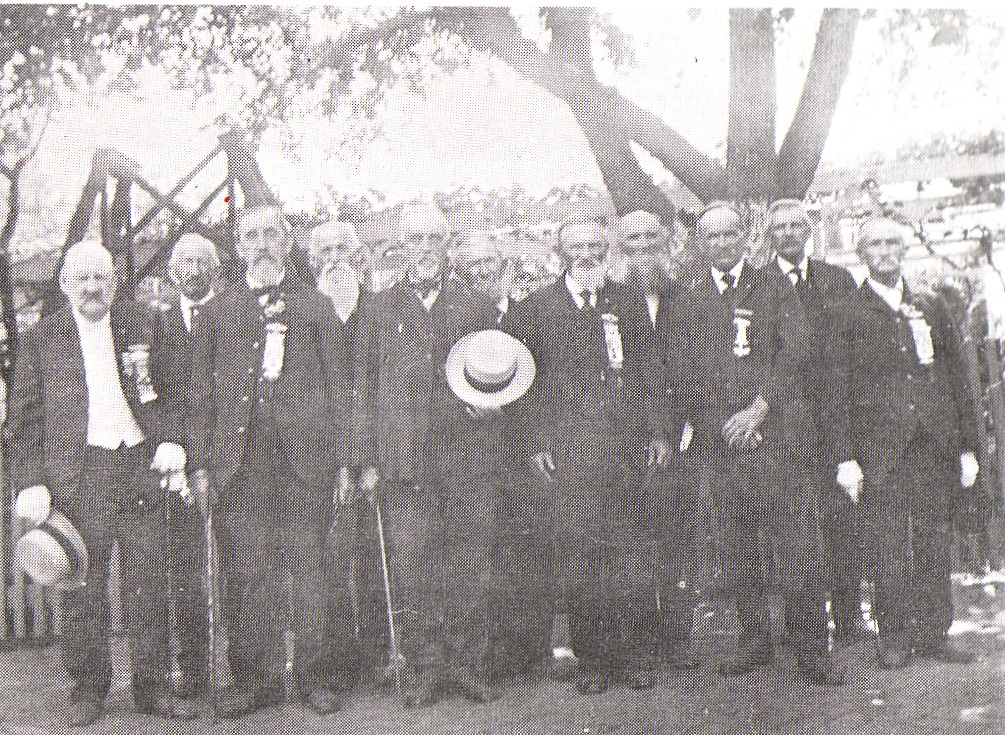


Enjoyed the site.